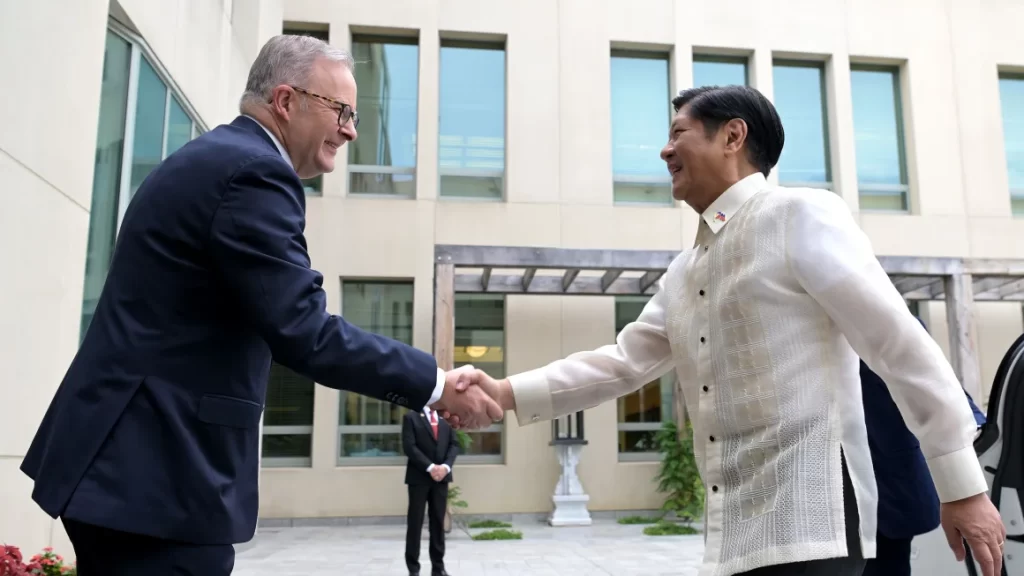Why Australia keeps an arm’s length from South China Sea tensions, even as it draws closer with the Philippines
When Philippine President Ferdinand Marcos Jr. addressed the Australian Parliament last week there was no mistaking the fighting talk.
The Philippines was on the “front line” of a battle for regional peace, he said, battling “actions that undermine regional peace, erode regional stability, and threaten regional success.”

He likened the situation to 1942, saying his country would be “firm in defending our sovereignty, our sovereign rights, our jurisdiction,” and would “not allow any attempt by any foreign power to take even one square inch of our sovereign territory.”
Neither was there any doubt about the intended target of his words, even if he didn’t mention it by name: this was all about China.
Beijing’s actions in the South China Sea, where it has numerous territorial disputes with Manila, have become increasingly aggressive since Marcos won the presidency a little less than two years ago and took over from his more China-friendly predecessor Rodrigo Duterte.
Since then, according to Manila, China’s coast guard has regularly harassed Philippine fishing vessels in the fertile waters near Scarborough Shoal – most recently on February 22 – and fired water cannon on Philippine ships resupplying a military outpost in the Second Thomas Shoal.
Amid these increasingly aggressive maneuvers, Marcos has made little secret of his aim to shore up allies against China, and for good reason; this is a David-and-Goliath-style contest. Manila’s navy is undermanned, underfunded and underequipped, while China’s is the largest in the world – even without counting the “little blue men” militia various nations accuse China of using to push its territorial claims.